PLEASE NOTE:
All illustrated art works are for sale so if interested contact me for a price by email: davideif@hotmail.co.uk
All my art has been personally collected on the spot from various visits to Bali in the 80’s and 90’s and contacts with local artists. I bought what I liked only and much of it was not to be found in typical mainstream mass produced art and souvenir shops! Now I need to clear and sell much of it as I have no room to display it and want others to be able to enjoy and appreciate it. 🙂
KELIKI MINIATURE PAINTING
In the 1970s, miniature paintings emerged from Keliki, a small village north of Ubud, led by a local farmer I Ketut Sana. The sizes range from as small as 2 x 3 inch to as large as 10 x 15 in.. He combined the line drawing of Lempad and the details of the Batuan school. Every inch of the space is covered with minute details of Balinese village life and legends drawn in ink and colored with watercolor. The outcome is a marriage between the youthfulness of the Ubud school and the details of the Batuan School. The Keliki artists proud with their patience to paint minute details of every objects meticulously that occupy the drawing space.
Major artists from the Keliki Artist School are I Ketut Sana, I Wayan Surana, I Lunga, I Wayan Nengah, I Made Ocen, I Made Widi, I Wayan Lanus, Ida Bagus Putra, and many others.
ARIE SMIT AND YOUNG ARTISTS STYLE BALI
As Tahiti tempted Gauguin, so the beauty of Bali beckoned Arie Smit. As a wide-eyed schoolboy, he was fascinated by the colourful tales he was told of the then Dutch East Indies (today’s Indonesia). Fuelled by vivid imagination, his interest grew, and he remembers how he would dream of wild exotic animals hiding in dense tropical jungle. When, in 1938, he was called up by the Dutch Army to serve in Jakarta (then called Batavia), it seemed like a dream come true.
Born in Zaandam in The Netherlands on April 15, 1916, the third of eight children, he was christened Adrianus Wilhelmus Smit. Already as a young boy he showed signs of artistic talent so, after leaving school in his home town, he studied design at the Academy of Arts in Rotterdam. Whenever there was a major art exhibition at the museums in Rotterdam or Amsterdam, he would go there and carefully study the paintings.
When Smit arrived in Jakarta the army put his knowledge to good use by assigning him to their Lithography & Drafts Department in the Topographical Service. There he became a chromo lithographer and worked engraving relief maps of the Indonesian islands. “I used to etch Balinese mountains onto maps … and I always promised myself that one day I would go to Bali,” he says. During this time he already dreamt of becoming a full-time artist and he’d spend all his free time searching for motives for his watercolours.
When the war came, Smit was transferred to the infantry in East Java but was soon captured and sent as a prisoner of war to the infamous Burma railroad.
He was young and strong, so he survived this three-and-a-half- year-ordeal and, when after the war, he was discharged from the army, he decided to stay in Indonesia. “Life in Holland was at a low ebb, and Indonesia offered a wonderful climate, beautiful landscape and hope for the future.” In 1950 he became an Indonesian citizen. “I was so sure that this is my country,” he says.
It was not until 1956 that his dream to visit Bali was to come true. He had met the well-known art dealer and connoisseur, Jimmy Pandy, at an exhibition of Balinese art in Jakarta and Pandy had insisted: “You must come to Bali. I’ve got a place for you to stay.” So when Smit arrived in Sanur, there was a room waiting for him in a little house on stilts at the beach.
Pandy and Smit became good friends, and for 16 years Pandy sold the works of Arie Smit through his gallery. It was a successful partnership. Pandy had many friends in high places and Sukarno himself would bring his state guests to the small gallery.
It wasn’t long before Arie set off to explore the different regions of Bali. “I like to change my subject matter – I am a kind of old-fashioned Dutch discoverer.” One day in 1960, when Arie Smit lived in a house near Campuan in the Ubud district, he went for a walk through the rice fields in neighbouring Penestanan. There he found a young boy drawing pictures in the sand. Smit invited the youth to his studio and gave him crayons and paper. The name of the young boy was I Nyoman Cakra. As a true Balinese, Nyoman didn’t want to be alone, so he asked, “Can my nephew come too?” His nephew was I Ketut Soki, and these two youths became Smit’s first pupils.
This casual meeting was to spark a whole new art movement, the “Young Artists”, with Smit becoming known as the “father” of this naive, brightly-coloured style. Although he shrugs off the epithet “father”, Smit’s generosity with time and art materials has earned him lasting gratitude from the still active (but no longer young) painters. In fact, his art lessons became so popular that he got into trouble with the local schoolteachers. He had to promise only to invite children who had already left school, otherwise the youngsters would rather go to Bapak Arie than to school.
During his years in Bandung, Smit had become interested in children’s art and had studied the subject in depth, so when he arrived in Bali he was well qualified to try out what he had learnt. Conscious of the need to teach lightly and not overpower his young pupils he would only suggest, but never tell them directly, what or how to paint. In a ripple effect, his 40 or so young pupils in turn inspired their friends and, at the height of the movement, there would have been between 300-400 “Young Artist” painters. I Ketut Soki, went on to become the most famous and successful of them all.
http://www.asiafoto.com/article1.htm + http://www.ketutsoki.com/theartist.htm
BALINESE TRADITIONAL DANCERS – BARONG IS MOST POPULAR
BARONG DANCE IN UNUSUAL BLACK/WHITE ON CANVAS
MANY SKILFULL WOODCARVERS – I HAVE TWO OTHER SMALLER EXAMPLES
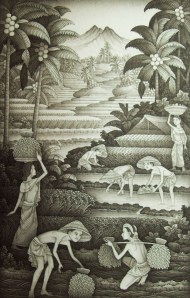
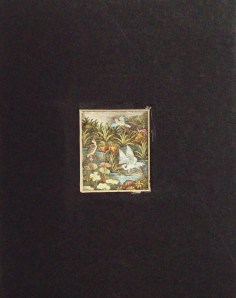
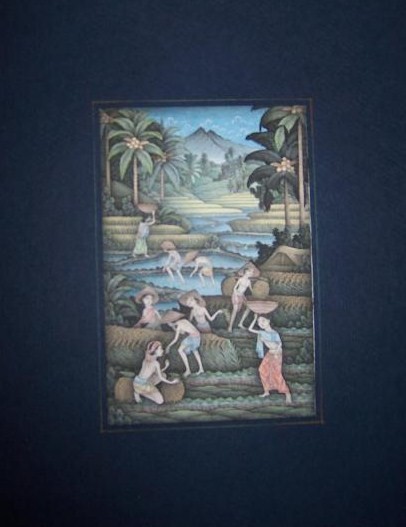
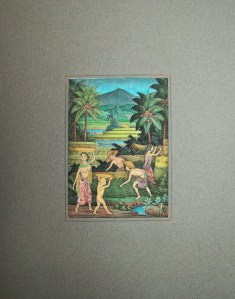


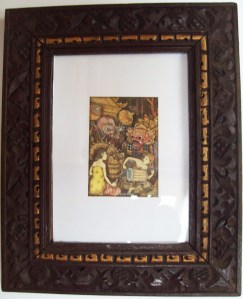
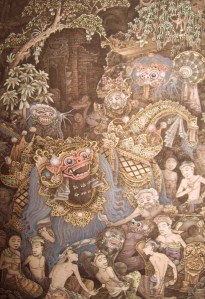
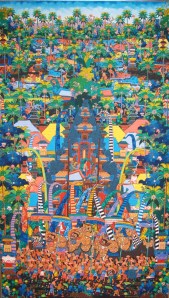
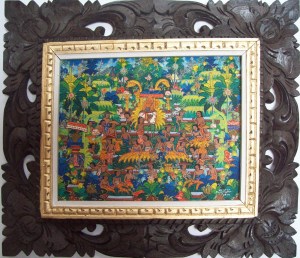


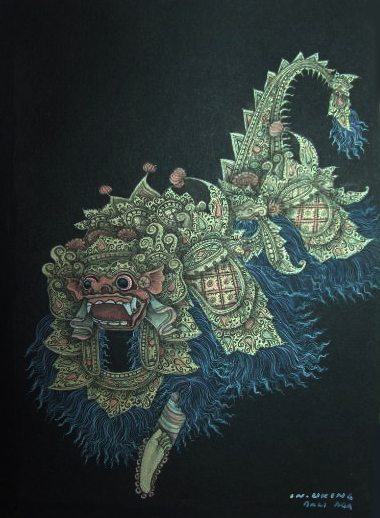
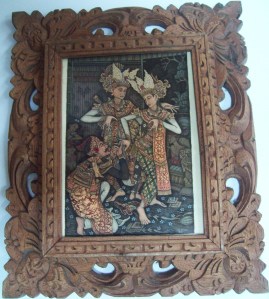

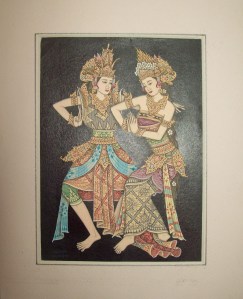
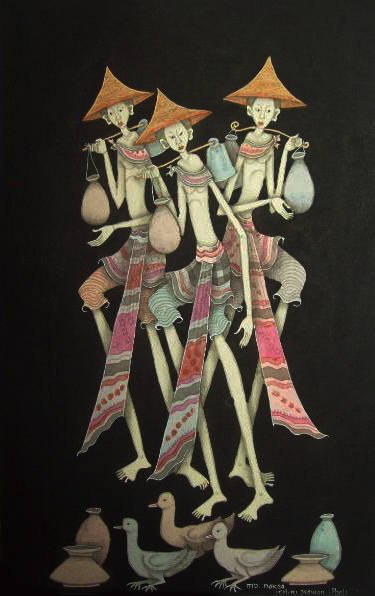
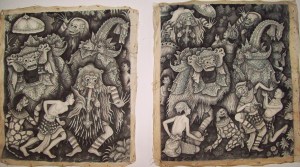
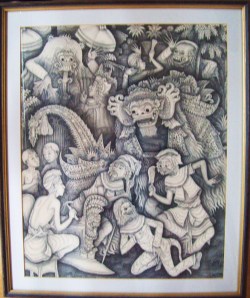


Leave a comment